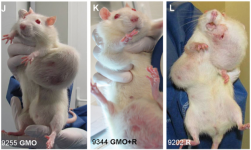W
wilbur
as the owner of a large piece of land I 've used 'roundup'. soon stopped tho when I found regrowth to be slowed and all the frogs died.
frogs didn't die from the glyphosate. no instead they died from the wetting agent fitted to the glyphosate.
so monsanto is entirely correct when it states glyphosate won't harm aquatic creatures. seems they just kinda forgot about the wetting agent.
frogs didn't die from the glyphosate. no instead they died from the wetting agent fitted to the glyphosate.
so monsanto is entirely correct when it states glyphosate won't harm aquatic creatures. seems they just kinda forgot about the wetting agent.






